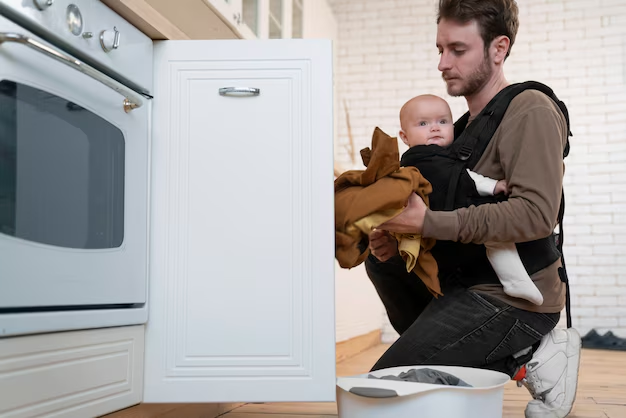Why Is There Water Inside My Refrigerator? Unraveling the Mystery and Solutions
Opening your refrigerator to find water pooling at the bottom or dripping from shelves can be a frustrating experience. Not only is it inconvenient, but it might also lead to concerns about potential damage. So, why is there water inside your refrigerator? Understanding the causes can help in diagnosing and fixing the issue, ensuring your appliance continues to run smoothly.
Common Causes of Water Accumulation in Refrigerators
Defrost Drain Blockage
One of the most common reasons for water inside your refrigerator is a blocked defrost drain. Modern refrigerators feature a self-defrosting system that periodically melts away frost from the evaporator coils. This melted frost, or condensation, channels through the defrost drain to a pan beneath the refrigerator. If this drain becomes blocked, typically by a buildup of food particles or ice, water will start pooling at the bottom of the fridge.
How to Fix It:
Unplug the Refrigerator: Always start by turning off and unplugging the refrigerator for safety.
Clear the Drain: Use warm water to flush out the blockage. A turkey baster can help direct water effectively. Use a pipe cleaner or a small bottle brush to remove stubborn clogs.
Dry the Area: Ensure the drain hole is clear and dry the area thoroughly to prevent future clogs.
Humidity Levels and Food Storage
High humidity levels in the fridge or improper food storage can also contribute to water buildup. When moist air enters the fridge, it condenses into water on contact with colder surfaces, including shelves and walls.
Preventive Steps:
- Check Door Seals: Make sure the refrigerator doors seal tightly to prevent external air from entering.
- Proper Food Storage: Store food in airtight containers to minimize moisture inside the fridge.
- Adjust Temperature: Ensure your refrigerator temperature is set to manufacturer recommendations, typically between 37°F and 40°F (about 3°C to 4°C).
Malfunctioning Water Dispenser or Ice Maker
An issue with the refrigerator’s water dispenser or ice maker can lead to water leaks. This could stem from a disconnected or improperly installed water line or internal parts malfunctioning.
Key Actions:
- Verify Connections: Check the water supply line for tight, secure connections.
- Inspect the Ice Maker: Ensure the ice maker is aligned and functioning properly. Correct any misalignments.
Advanced Causes of Water in the Refrigerator
Faulty Door Refrigeration Gasket
The gasket around the refrigerator door creates an airtight seal. If it’s damaged, warm air can enter the fridge, causing excess moisture and condensation.
Solution:
- Gasket Inspection: Check for any signs of wear or damage, such as cracks or brittleness.
- Replace if Necessary: A worn-out gasket should be replaced to maintain the refrigerator’s efficiency.
Condenser Coil Problems
The condenser coils play a crucial role in maintaining the appliance's temperature. Dirty or damaged coils can lead to cooling issues and subsequently, water accumulation.
Maintenance Tip:
- Regular Cleaning: Ensure condenser coils are clean. Use a vacuum cleaner or a brush to gently remove dust and debris.
- Check for Damage: If the coils appear damaged, a professional technician should handle repairs or replacements.
Practical Consumer Tips 📝
- Check for Obstructions: Inspect the rear of the fridge to ensure no items are blocking airflow.
- Regular Maintenance: Schedule routine maintenance checks to prevent issues like blocked defrost drains or faulty gaskets.
- Monitor Appliances: Keep an eye on your fridge's temperature and performance for early signs of trouble.
Frequently Asked Questions
How can I tell if the defrost drain is clogged?
Look for signs such as puddles at the bottom of the fridge or ice buildup elsewhere. A thorough inspection is best conducted when the fridge is empty to see all areas clearly.
What should be the ideal refrigerator temperature setting?
For optimal performance and food safety, your refrigerator should be set between 37°F and 40°F (about 3°C to 4°C).
Are there signs that my refrigerator needs professional repair?
Yes, if you notice persistent water pooling despite regular cleaning and maintenance, unusual noises, or cooling issues, professional assessment is recommended.
Closing Insight
Discovering water in your refrigerator can be troubling, but armed with the right knowledge, you can address most issues independently. Whether it’s a simple cleanup or a sign of deeper problems, understanding the potential causes helps create a proactive maintenance plan. Taking steps to ensure your refrigerator is in peak condition not only prevents water issues but also prolongs the appliance’s life, ensuring it remains a reliable part of your home.
